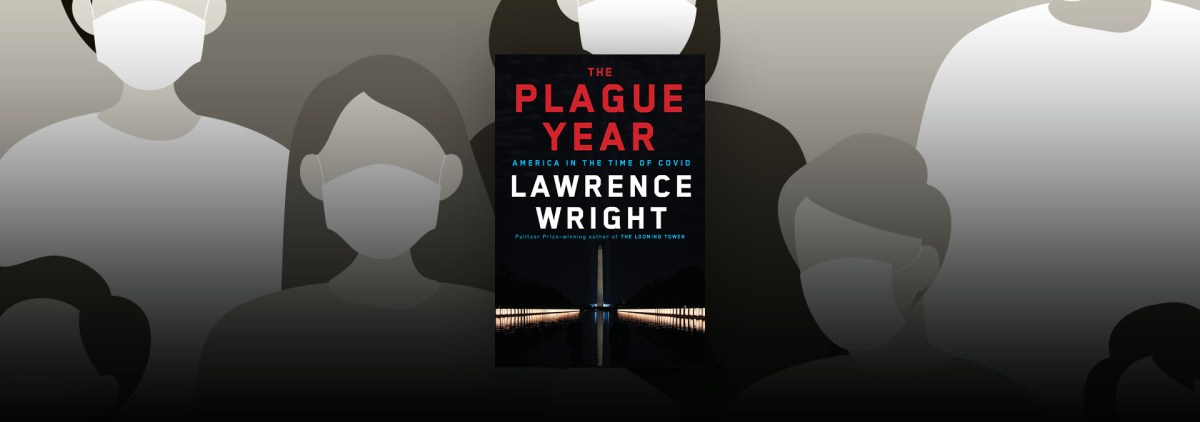[ad_1]
The successes of the vaccine rollout in the United States must not be allowed to obscure earlier failures to contain COVID-19. At the time of writing, almost six hundred thousand Americans have died of the disease. In his new book, The Plague Year, Lawrence Wright argues that they did not have to. He believes the suffering caused by COVID-19 in America was not inevitable or due to a lack of resources but the result of weak leadership. People should be angry about this and, to his credit, Wright is.
The book identifies three major opportunities to contain COVID-19. The Chinese government missed the first of these by refusing to share early evidence of transmission between people and samples of the disease, both of which would have helped other countries to prepare. Once the virus had spread across the globe, mitigating its impact largely depended on systematic testing and people wearing masks. These measures were the responsibility of individual governments; some performed better than others. In the United States, the overly complex testing kits produced by the CDC were slow to process, limited in supply, and resulted in numerous false positives, preventing effective contact tracing or even an accurate picture of infections. A month after the first patient was confirmed in America, the country had conducted less than 500 tests, compared to 65,000 in South Korea, which saw its first case a day earlier.
In this instance, as Wright recognizes, bureaucratic ineptitude was “compounded by scientific incompetence”. There can be no such excuse for the failure of the federal government to actively support wearing masks; the problem was political rather than technical or administrative. When the CDC finally recommended their use in April 2020, Trump immediately undermined the new guidelines by insisting they were voluntary and he did not intend to follow them. He was uncharacteristically consistent about this; even when he toured a factory in Arizona that made masks, he did not cover his face. Wright argues that Trump’s objective was to present himself to his base as “defiant, masculine, invulnerable”. The rejection of masks, the insistence that the virus would “go away” without intervention, and the promotion of spurious treatments such as hydroxychloroquine were all part of a strategy that prioritized his re-election over public health. The virus presented a threat to his presidency, largely because of its economic impact. Once it became obvious it could not be easily controlled he sought to trivialize it, even as people died.
The Plague Year emphasizes missed opportunities in handling the pandemic, rather than suggesting failure was inevitable, and draws attention to those who advocated policies that might have more effectively contained infections. These include well-known experts such as Anthony Fauci, but also less familiar figures such as Matthew Pottinger. The book is generous in giving people credit for what they did achieve, even when their contribution were uneven; Deborah Birx attracted attention for refusing to publicly challenge the president when he suggested injecting bleach but Wright focuses on the time she spent driving around the country convincing states to implement public health measure, often with considerable success.
The problem was not the lack of able, well-intentioned people, but the fact that they were not in charge. Trump was. He had plenty of chances to be “a take-charge president, a unifier”, as he briefly represented himself, but instead focused on keeping the economy open whilst passing responsibility for managing the crisis to governors, who were forced to compete with one another for scarce resources. Access to what federal support was available often depended on personal connections within the administration, turning “aid to states and hospitals into a form of patronage.” The chaos, inconsistency, and inefficiency of the White House was extended to the country as a whole.
In this environment, the pandemic predictably exposed and exacerbated inequalities. Wright is particularly attentive to the disproportionate impact of the disease on people of color; data released in July 2020 showed that whilst there were 38 coronavirus cases for every 10,000 Americans, “for whites, the number was 23; for Blacks, it was 62; and for Hispanics, it was 73.” His analyses of these disparities are sometimes insufficiently integrated with other elements of the text, which is frustrating as the object is to demonstrate the centrality of race to American society, but he does trace the historical foundations of differences in infection and mortality rates rather than just describing them. A more explicit discussion of class would have strengthened his argument but his emphasis on the fact that social and economic precarity substantially increased the risk from COVID-19 still demonstrates that the crisis required a political as well as a scientific response.
The Plague Year is written to the moment, ending with Biden’s commemoration of the dead the day before his inauguration. The speed of its composition sometimes shows in its structure and even its prose. The claim that, before addressing crowds who would later attack the Capitol, Trump “appeared to be concentrating his powers on the host of followers who had responded to the siren of his implacable will” not only lapses into cliché but, in so doing, attributes to the former president qualities he does not possess. Despite being slightly uneven, the book is a valuable, readable early contribution to what will inevitably become a substantial body of work on the pandemic. Wright secured remarkable access to key figures in the scientific, medical, and political communities, and provides a compelling account of the complexities of COVID-19, the struggle to contain it, and the search for a vaccine. It is important to recognize the scientists, doctors, nurses, and other essential workers who did their jobs under dangerous conditions, and to expose those politicians and advisors who, from positions of relative safety, did not. The Plague Year is to be commended for both its compassion and its anger.
NONFICTION
The Plague Year
By Lawrence Wright
Knopf Publishing Group
Published June 08, 2021

[ad_2]
Source link
